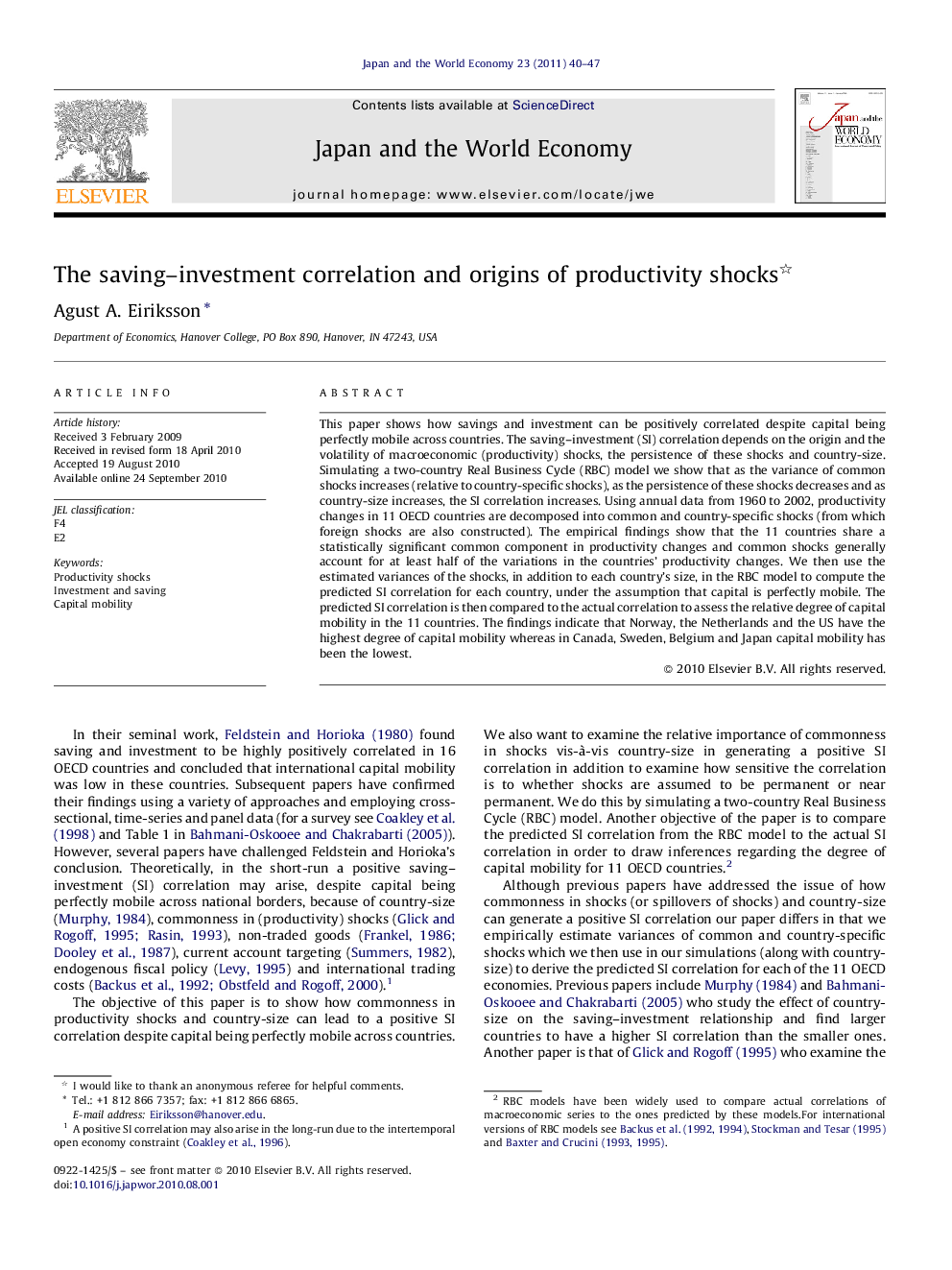| کد مقاله | کد نشریه | سال انتشار | مقاله انگلیسی | نسخه تمام متن |
|---|---|---|---|---|
| 5086271 | 1375163 | 2011 | 8 صفحه PDF | دانلود رایگان |
عنوان انگلیسی مقاله ISI
The saving-investment correlation and origins of productivity shocks
دانلود مقاله + سفارش ترجمه
دانلود مقاله ISI انگلیسی
رایگان برای ایرانیان
موضوعات مرتبط
علوم انسانی و اجتماعی
اقتصاد، اقتصادسنجی و امور مالی
اقتصاد و اقتصادسنجی
پیش نمایش صفحه اول مقاله

چکیده انگلیسی
This paper shows how savings and investment can be positively correlated despite capital being perfectly mobile across countries. The saving-investment (SI) correlation depends on the origin and the volatility of macroeconomic (productivity) shocks, the persistence of these shocks and country-size. Simulating a two-country Real Business Cycle (RBC) model we show that as the variance of common shocks increases (relative to country-specific shocks), as the persistence of these shocks decreases and as country-size increases, the SI correlation increases. Using annual data from 1960 to 2002, productivity changes in 11 OECD countries are decomposed into common and country-specific shocks (from which foreign shocks are also constructed). The empirical findings show that the 11 countries share a statistically significant common component in productivity changes and common shocks generally account for at least half of the variations in the countries' productivity changes. We then use the estimated variances of the shocks, in addition to each country's size, in the RBC model to compute the predicted SI correlation for each country, under the assumption that capital is perfectly mobile. The predicted SI correlation is then compared to the actual correlation to assess the relative degree of capital mobility in the 11 countries. The findings indicate that Norway, the Netherlands and the US have the highest degree of capital mobility whereas in Canada, Sweden, Belgium and Japan capital mobility has been the lowest.
ناشر
Database: Elsevier - ScienceDirect (ساینس دایرکت)
Journal: Japan and the World Economy - Volume 23, Issue 1, January 2011, Pages 40-47
Journal: Japan and the World Economy - Volume 23, Issue 1, January 2011, Pages 40-47
نویسندگان
Agust A. Eiriksson,